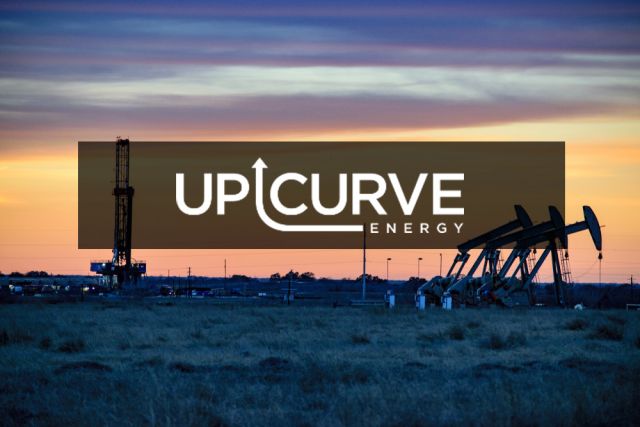
On a shrinking list of private equity-backed Delaware Basin producers, UpCurve Energy stands out in Reeves County, Texas. (Source: Shutterstock.com, UpCurve Energy)
The Delaware Basin’s core is in an M&A frenzy. Deal activity has been slower in the southern reaches of the Texas Delaware, where drilling targets are deeper and output is gassier.
But as core Permian inventory gets acquired and stowed away in producers’ portfolios, E&Ps are taking harder looks at their options in the southern Delaware Basin.
UpCurve Energy CEO Zach Fenton thinks it’s about time.
The private producer has been operating in the southern Delaware Basin since launching with an equity commitment from Post Oak Energy Capital in 2015.
As A&D activity heats up across UpCurve’s fence lines in Reeves County, Texas, Fenton watches with interest.
To the east—proverbially down the street from UpCurve’s acreage block—Occidental Petroleum recently agreed to sell its large “Barilla Draw” package to Permian Resources for $817.5 million. The transaction, set to close at the end of the third quarter, was a positive for the basin, Fenton said.
“It’s nice to see a reminder that people are excited about the southern Delaware,” Fenton told Hart Energy. “We think Barilla Draw is a great asset.”
Taking a closer look, Barilla Draw has some striking similarities to UpCurve’s own acreage block.
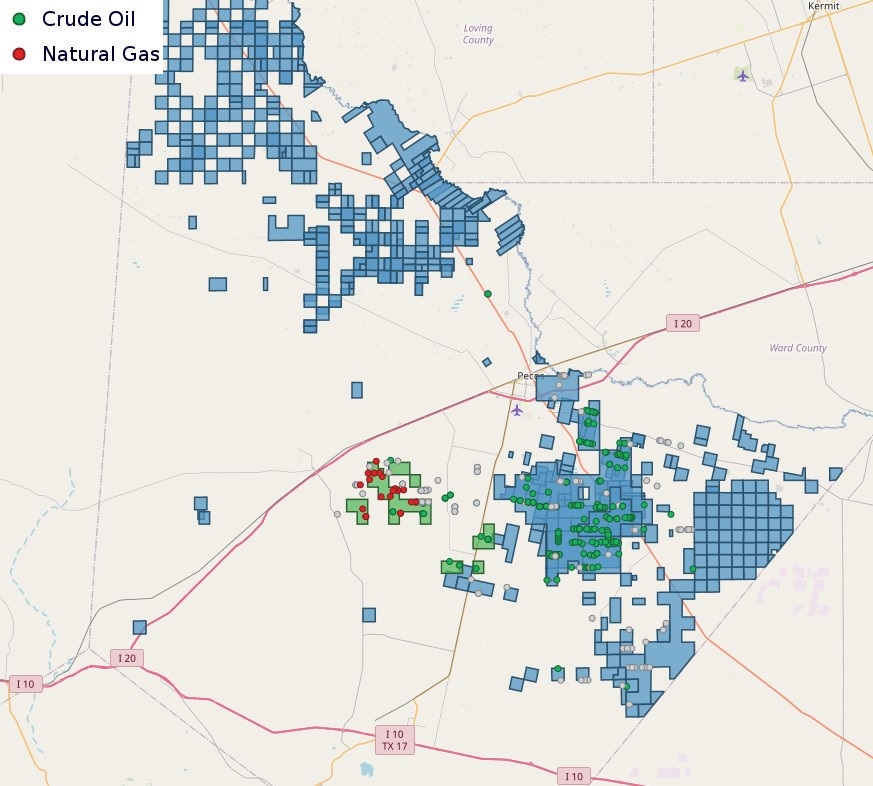
Oxy’s Barilla Draw assets included 29,500 net acres and around 15,000 boe/d of net production (55% oil).
UpCurve’s nearby position is about 21,000 net acres with net production of 13,000 boe/d (50% oil).
The Barilla Draw deal included about 200 gross undeveloped drilling locations. UpCurve has about 120 gross locations at its disposal.
“[Barilla Draw] has development across a couple benches, like ours, and some interesting upside in the Second Bone,” Fenton said.
It’s “a positive read-through” for UpCurve to see a blocky, contiguous package like Barilla Draw trade hands effectively next door to its own acreage, he said.
“There’s just not a lot of those type assets left in the southern Delaware,” Fenton said. “We think it’s an exciting point, both for us and for the southern Delaware.”
In late July, Vital Energy agreed to acquire private E&P Point Energy Partners in a $1.1 billion transaction with non-operated specialist Northern Oil & Gas (NOG). Point Energy Partners’ assets are located north of Oxy’s Barilla Draw portfolio.
Vital agreed to acquire 80% of the Point assets for $880 million, while NOG acquired a 20% stake for $220 million.
The Point assets include approximately 16,300 net acres, primarily in Ward, Winkler and Loving counties, Texas. Point’s production peaked at around 30,000 boe/d in April.
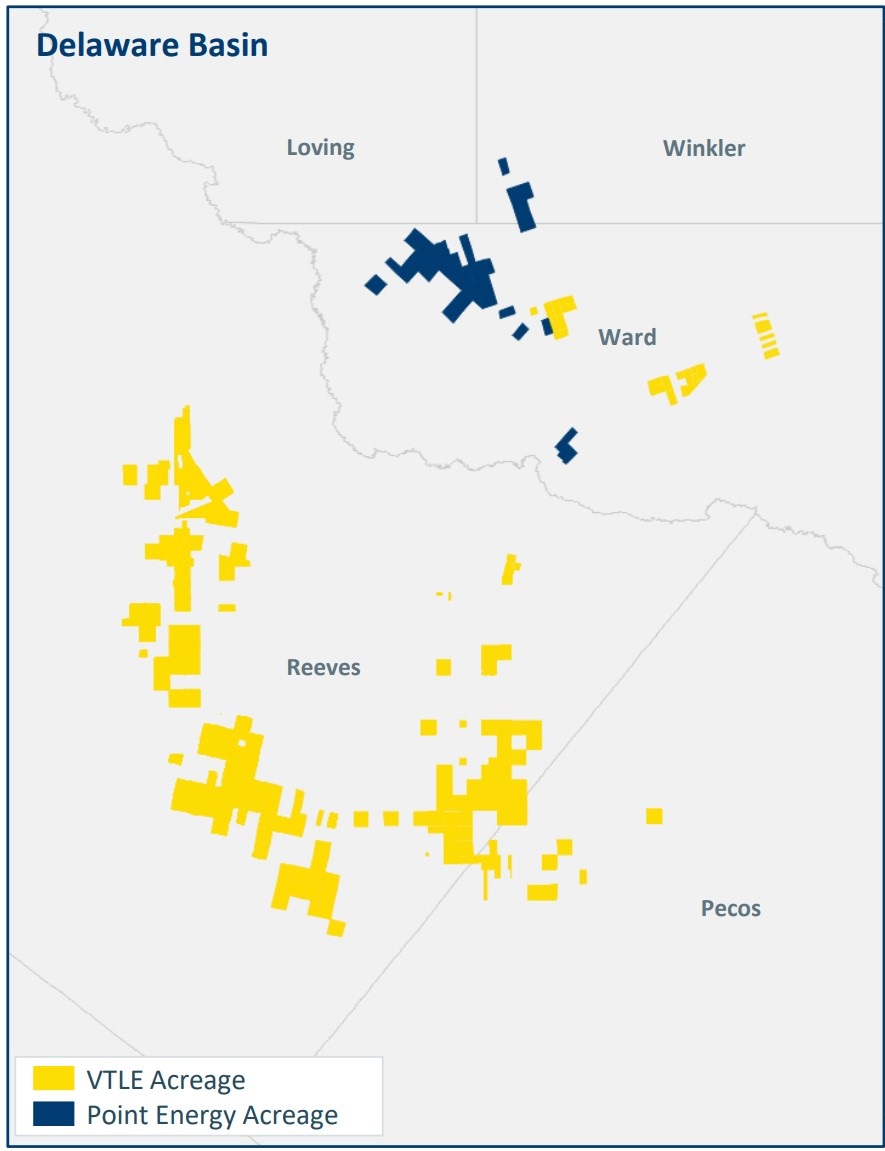
RELATED
Permian Resources Bolts-on Oxy’s Delaware Basin Assets for $820MM
Southern Delaware draw
The southern Delaware’s drilling regime is deeper and gassier than the Delaware’s core or the more eastern Midland Basin.
And few people know more about drilling the southern Delaware than Fenton. UpCurve has drilled more than 60 horizontal wells in Reeves County since 2016, under a one- to two-rig development program.
“We’ve basically been drilling for the most part continuously,” Fenton said.
UpCurve has watched development in its backyard progress notably since launching nearly a decade ago.
There wasn’t a lot of activity near UpCurve’s acreage when the company started drilling in 2016. Colgate Energy, which later merged with Centennial Resource Development to form Permian Resources in 2022, had a legacy position in the area, Fenton said.
Those early years were delineation mode, he recalled. Operators drilled single wells, targeting a single shallow Wolfcamp interval, and tinkered with spacing designs. Eventually, producers started moving in to test the deeper Wolfcamp benches.
“Now, it’s moved into development and optimization,” Fenton said.
Operators have a solid grasp on developing the Wolfcamp A, B, C and Third Bone Spring Sand intervals. Those benches are largely being co-developed together with multi-bench pad development projects.
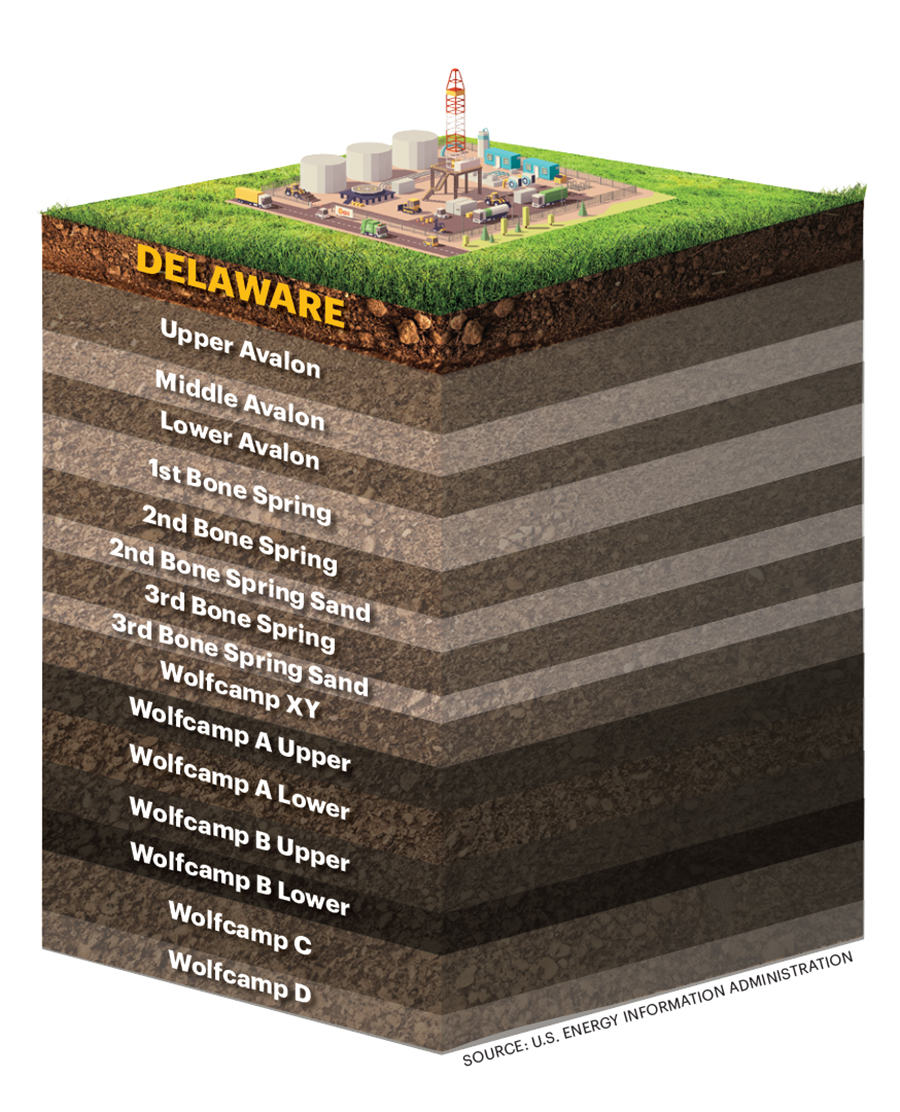
UpCurve’s Sugar Raider pad is evocative of the pedal-to-the-metal development happening in the southern Delaware.
The five-well Sugar Raider pad included three Wolfcamp A wells and two Wolfcamp B wells, each drilled with a 1.5-mile lateral, Fenton said.
UpCurve started reporting production from the Sugar Raider pad in November 2022, Texas Railroad Commission (RRC) data show. Since then, the project has produced more than 1 MMbbl of crude and condensate.
“Those wells were about a mile-and-a-half, not quite two miles—which speaks even more to the productivity per foot of [Sugar Raider],” Fenton said.
In late July, the company submitted initial production data for a six-well Lowe pad. It’s a similar project to the Sugar Raider pad, targeting the Wolfcamp A and B intervals with an offset, wine rack-type design.
“The Sugar Raiders have [produced] over 1 million barrels, and I think the Lowe is off to a similar start,” Fenton said.
UpCurve has been able to go after bigger projects and multi-bench “cube” development as its balance sheet has grown.
The company has also been able to bring its costs down over time, enabling UpCurve’s shorter 1.5-mile lateral wells to compete for capital like a 2-mile well might in a different producer’s portfolio, Fenton said.
“Those are by far the right way to develop the area and to develop the asset: bigger cube or co-development projects,” he said.
Outside of the southern Delaware’s most popular targets, the Second Bone Spring interval is the most exciting upside bench where UpCurve has exposure, Fenton said.
Development of the Second Bone Spring Formation started with the Patriot Resources-Delaware Basin Resources (DBR) team, which operated the famed Red Bull property spanning Reeves and Pecos counties.
After trading hands, the Red Bull asset is now operated by VTX Energy Partners, a private upstream producer backed by international commodities trading house Vitol.
“Chevron is now drilling—they’ve got a rig drilling Second Bone wells just a few miles from our position,” Fenton said. “That’s the bench in the near term that we’re most excited about in terms of upside.”
RELATED
Coterra Energy’s 54-well Wolfcamp-Harkey Test
Permian balancing act
The entire Permian Basin has been windswept by a transaction tempest of large-scale M&A.
The biggest deals have happened on the Midland side of the basin, where Pioneer Natural Resources, Endeavor Energy Resources and CrownRock LP—among the basin’s top producers—were snapped up in a matter of months.
Exxon Mobil and Occidental have closed their respective acquisitions of Pioneer and CrownRock. Diamondback Energy’s $26 billion acquisition of Endeavor is still pending regulatory approval.
But a massive number of Delaware Basin E&Ps have also been acquired or signed M&A deals, including Ameredev II, Advance Energy Partners, Earthstone Energy, Forge Energy, Maple Energy Holdings, Novo Oil & Gas, Percussion Petroleum, Point Energy Partners, Tall City Exploration and Tap Rock Resources, among others.
Today, only a few private producers of notable scale remain in the Delaware Basin—including Franklin Mountain Energy, VTX, Avant Natural Resources and UpCurve itself.
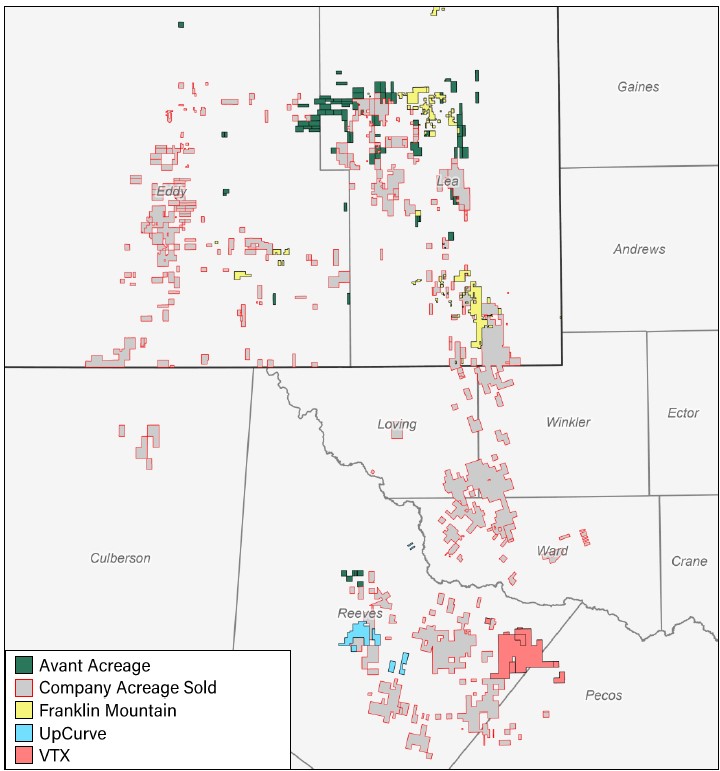
In the near term, UpCurve plans to maintain flat net production at around 13,000 boe/d, or grow output slightly.
That will help UpCurve generate healthy PDP and cash flow to return distributions to its investors, Fenton said.
But acquisitive producers are hunting for undeveloped Permian drilling inventory, so UpCurve isn’t racing to develop its own locations.
“We do have a lot of inventory, but it doesn’t mean we necessarily want to go accelerate and drill it all right now,” Fenton said. “[There’s a] reasonable chance, at some point in time, we do sell the asset—and the buyer is likely going to want that inventory to help sustain the cash flow levels of the company.”
“So, it’s a balance,” he said. “We’d love to accelerate, but we know the next owner of the business is going to want a lot of that inventory.”
RELATED
Avant Natural Resources Steps Out with North Delaware Avalon Tests
Recommended Reading
Utica Oil’s Infinity IPO Values its Play at $48,000 per Boe/d
2025-01-30 - Private-equity-backed Infinity Natural Resources’ IPO pricing on Jan. 30 gives a first look into market valuation for Ohio’s new tight-oil Utica play. Public trading is to begin the morning of Jan. 31.
Not Sweating DeepSeek: Exxon, Chevron Plow Ahead on Data Center Power
2025-02-02 - The launch of the energy-efficient DeepSeek chatbot roiled tech and power markets in late January. But supermajors Exxon Mobil and Chevron continue to field intense demand for data-center power supply, driven by AI technology customers.
Utica Liftoff: Infinity Natural Resources’ Shares Jump 10% in IPO
2025-01-31 - Infinity Natural Resources CEO Zack Arnold told Hart Energy the newly IPO’ed company will stick with Ohio oil, Marcellus Shale gas.
Artificial Lift Firm Flowco’s Stock Surges 23% in First-Day Trading
2025-01-22 - Shares for artificial lift specialist Flowco Holdings spiked 23% in their first day of trading. Flowco CEO Joe Bob Edwards told Hart Energy that the durability of artificial lift and production optimization stands out in the OFS space.
Ovintiv Names Terri King as Independent Board Member
2025-01-28 - Ovintiv Inc. has named former ConocoPhillips Chief Commercial Officer Terri King as a new independent member of its board of directors effective Jan. 31.
Comments
Add new comment
This conversation is moderated according to Hart Energy community rules. Please read the rules before joining the discussion. If you’re experiencing any technical problems, please contact our customer care team.






